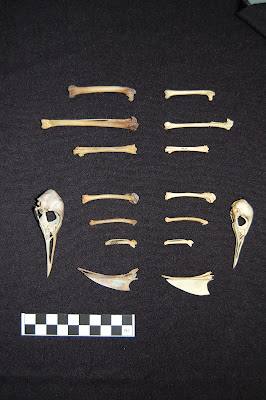5/17/12
This year, I really accomplished all I hoped to at my internship. Not only did I gain more hands-on experience than I ever could have hoped for, but Dr. Kirchman was able to expose me to a range of topics dealing with ornithology. I worked with ornithology on the molecular level along with preparing specimens. Dr. Kirchman even made sure to teach me little things about birds along the way, whether that be giving me a closer look at a bird's wing and explaining how characteristics were unique to their species or explaining bird articles he gave me to read so that they were comprehensible to me.
One of the challenges I faced throughout my internship was simply remembering everything that was happening. What I liked about my internship is that Dr. Kirchman had us hop right into things and we started off in the lab, however, this also meant I had to learn quick. Also, since we covered so many different aspects of ornithology, there might span two weeks or more between days we ran PCRs. I would have to remember what I had learned the previous time we met and remember all the techniques that went along with making a PCR. Luckily, Dr. Kirchman made many of these challenges easy for me by giving me nice reminders along with occasional helpful anecdotes just to help the memory stick a little easier.
For interns next year, I would recommend that you do your blog posts ASAP. Sometimes when I had a busy week, I would wait four days or even a week before posting about that week's meeting. Bad idea. I usually had trouble remembering what we had even done let alone the long sciency words I had learned that day. Besides that though, I just recommend that you make sure to have fun and enjoy the time you have with your mentor. The time goes by quickly, so don't be afraid to ask questions if you don't understand or want delve a little deeper into your internship. As for advice to directors of the program: great work and keep it up! I had a blast this year and expect to again next year :)



